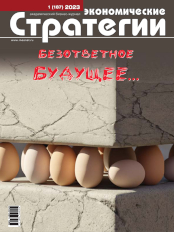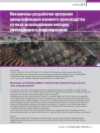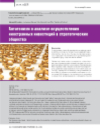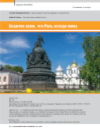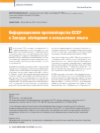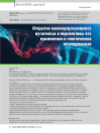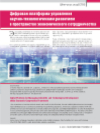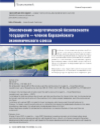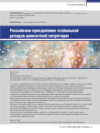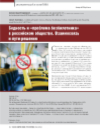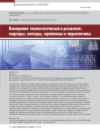Mechanisms for Developing Military Production Diversification Programs Based on the Simulation Methods
DOI: 10.33917/es-1.187.2023.130-142
The main purpose of this work is to develop theoretical and methodological provisions for substantiation of strategic decisions in the field of forming (in the context of military production and import substitution diversification) plans for manufacturing high-tech civilian products by enterprises of the domestic military-industrial complex (DIC).
The following issues are addressed and resolved in the paper: 1) comparative analysis of the specific features of the organization of the of military products manufacturing was carried out; 2) proposals were made on the range of high-tech civilian products that can be produced by defence industry enterprises in the context of the military production diversification; 3) the expediency of using simulation modeling in formation and justification of military production diversification programs was proved; 4) the fundamental principles of building simulation models were formulated and substantiated; 5) the sequence, order, methods and procedures for developing medium-term and annual plans for economic and social development of diversified defence industry enterprises in the context of diversifying military production were developed.
Scientific novelty of the present article consists primarily in qualitative assessment of the impact of changing external factors on the results and performance of economic entities (enterprises), carried out with the help of simulation modeling as a working tool.
References:
1. Bratukhin A.G., Dmitriev O.N., Koval’kov Yu.A. Potentsial konversii [Conversion Potential]. Moscow, Mashinostroenie, 1992, 453 p.
2. Bratukhin A.G., Kulichkov E.N., Kalachanov V.D. Konversiya aviakosmicheskogo kompleksa Rossii [Conversion of the Russian Aerospace Complex]. Moscow, Mashinostroenie, 1994, 272 p.
3. Bratukhin A.G., Kalachanov V.D., Yakovlev S.P. Diversifikatsiya rossiiskogo aviatsionnogo promyshlennogo kompleksa [Diversification of the Russian Aviation Industrial Complex]. Moscow, MAI, 1999, 131 p.
4. Manturov D.V., Kalachanov V.D., Efimova N.S. Organizatsiya proizvodstva v aviatsionnoi promyshlennosti: analiz i perspektivy [Industrial Organization in the Aviation Industry: Analysis and Perspectives]. Monografiya. Moscow, Red. izd. Tsentr ITEP, 2013, 152 p.
5. Chemezov S.V., Volobuev P.A., Koptev Yu.I., Kashirin A.I. Diversifikatsiya, kompetentsii, problemy i zadachi. Novye vozmozhnosti [Diversification, Competencies, Problems and Challenges. New Opportunities]. Innovatsii, 2017, no 4, pp. 3–26.
6. Bat’kovskii A.M., Klochkov V.V. Upravlenie material’no-tekhnicheskoi bazoi predpriyatii oboronno-promyshlennogo kompleksa v usloviyakh diversifikatsii [Managing Material and Technical Base of Enterprises of the Defence-industrial Complex in the Context of Diversification]. Voprosy innovatsionnoi ekonomiki, 2020, vol. 10, no 1, pp. 363–374.
7. Bat’kovskii A.M., Fomina A.V. Razrabotka programmy diversifikatsii predpriyatiya oboronno-promyshlennogo kompleksa [Development of a Diversification Program for a Defence-industrial Complex Enterprise]. Nauka bez granits, 2020, no 5(45), pp. 151–157.


